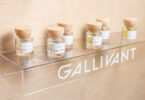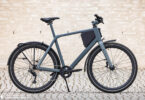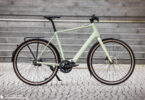You don’t have to travel all the way to Tuscany to enjoy perfect summer evenings, sometimes the ideal spot is just around the corner. In our case, it’s Rohracker, just a stone’s throw from our home base in Stuttgart. While indulging in wine among the vines, we gained insights into a different lifestyle, discussed the love of the countryside and cargo bikes. And also tried the latest in-drink – cheers!
A vineyard in Tuscany or nestled in the heart of the Languedoc-Roussillon region in France, is a thing of dreams but within reach of only a few, mostly actors or the odd privileged downshifter. The idea is as tempting as it is clichéd: Strolling through the vineyards at dawn in rubber boots, enjoying your own wine with friends under the embrace of ancient trees as the sun sets. But while others just drink the wine and fantasise about following in the footsteps of celebrity winemakers like Sting or Brangelina, our host Karin, her husband and some good friends have taken the bold step of cultivating their own wine.
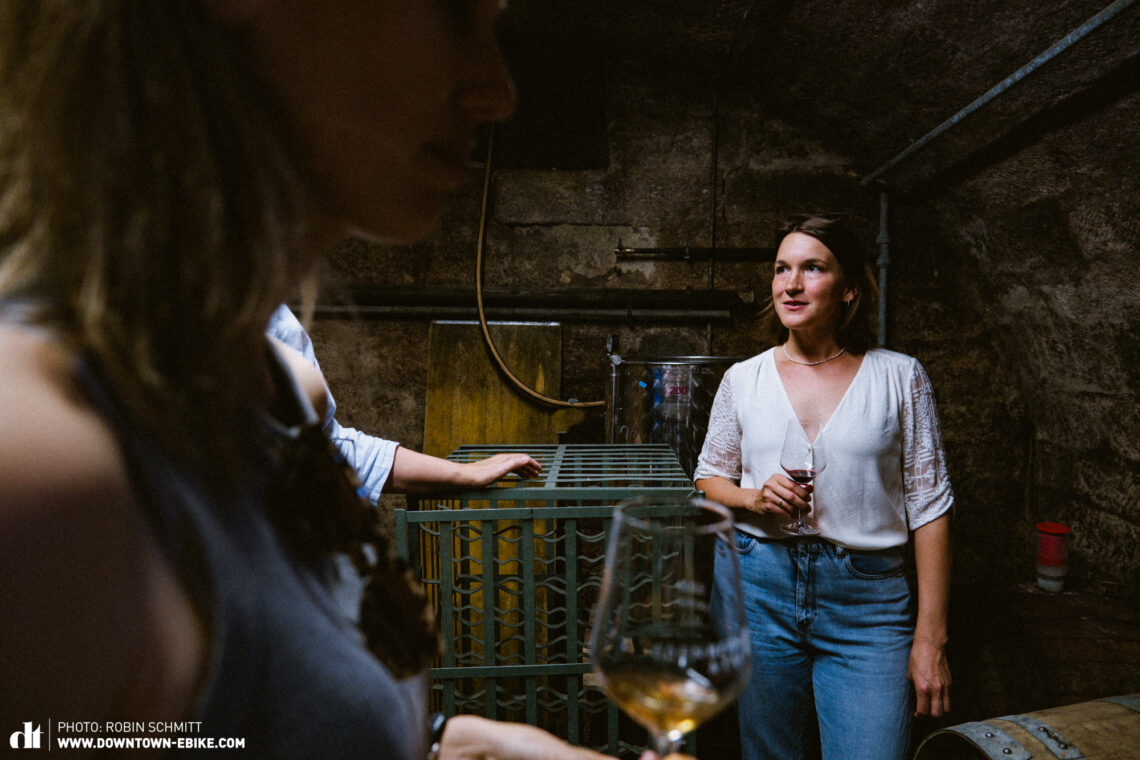
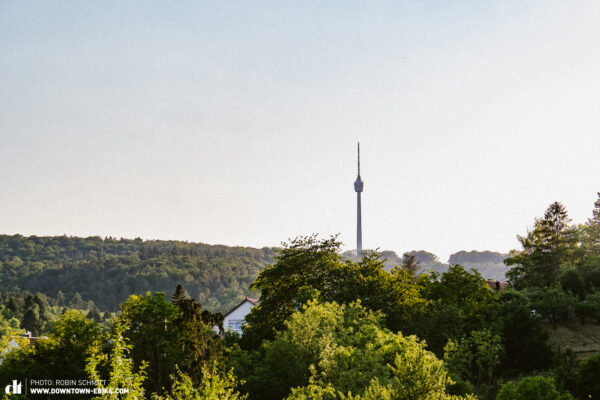
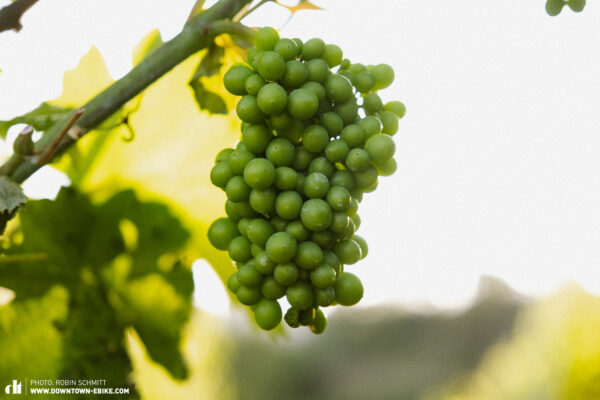
Stuttgart instead of Tuscany
On a balmy summer’s evening, we set off from the editorial office to visit the Edenberg & Tal wine collective. After battling through Stuttgart’s after-work traffic, the navigation system finally guides us down a steep pathway leading to Rohracker. The road is getting increasingly narrow, two cars couldn’t pass each other here. It’s 7pm, we’re so close to the city and yet a world away. It feels like stepping back in time: A warm glow on half-timbered houses, tucked away seating areas, bright sunflowers basking in the evening light. But also curious glances – everyone knows everyone here, and within minutes word of our presence has spread around the village.
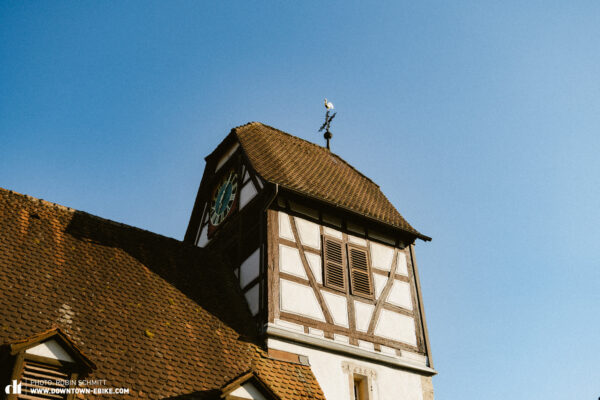
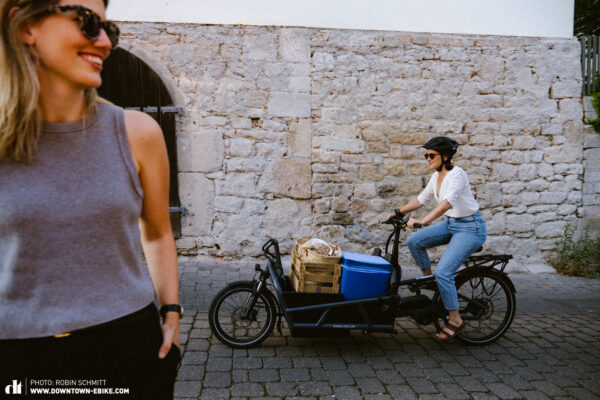

We have an appointment with Karin Nehls at the old vineyard, a place steeped in 800 years of viticultural heritage. This is where generations of vintners have unloaded their grapes and turned them into wine. Everything seems somewhat a bit out of time, but don’t be fooled: Karin arrives on her Riese & Müller e-cargo bike, which she usually uses as a kid’s cab for her three children. This evening, however, the bike is fully loaded with everything we need for a wine tasting in the vineyard. Excitement takes over, and as Karin rides her trusty e-cargo mule along the winding roads, we walk up an old, enchanted footpath into the vineyards. The last few metres are a climb up the old vineyard steps, ultimately revealing the vineyard hut nestled amidst the lush vines. We can’t wait to unpack the treasures of the cargo bike. Chilled wines, a very special summer drink and Swabian tapas await us – all organic, natural and wholesome. Our memories of the working day quickly fade away with the setting sun casting its warm hues over us as we enjoy the wine, philosophising about cargo bikes, vines and friendship.
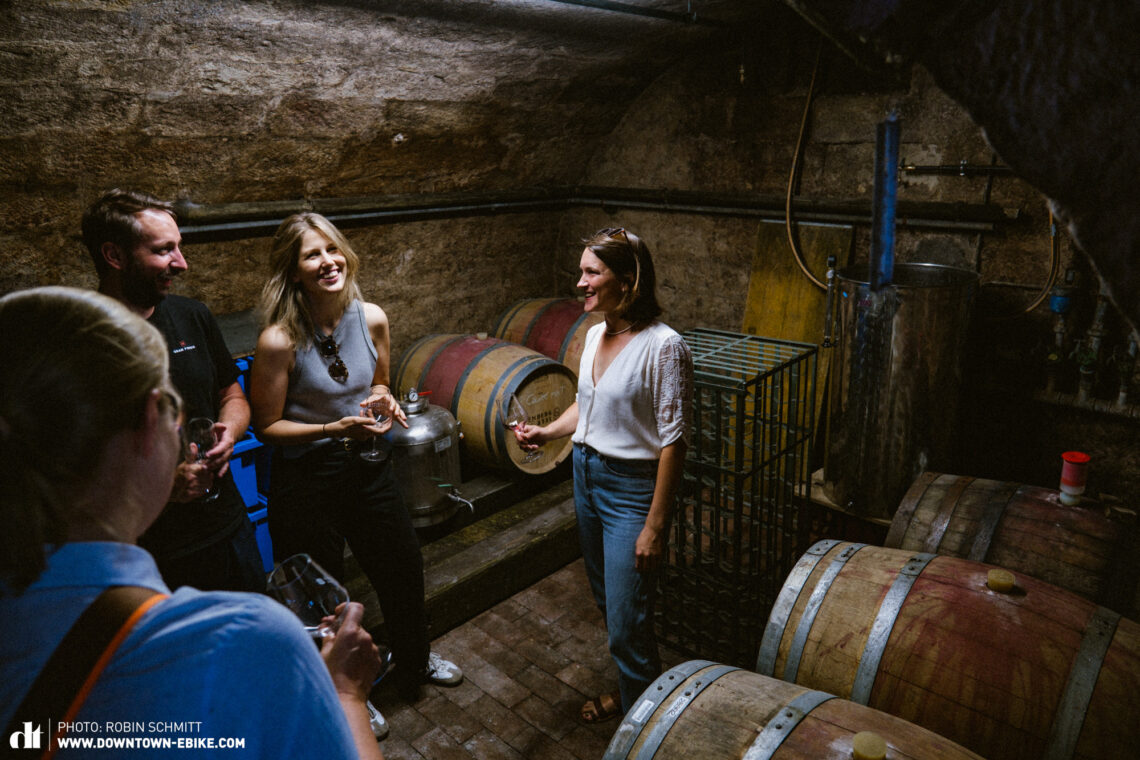
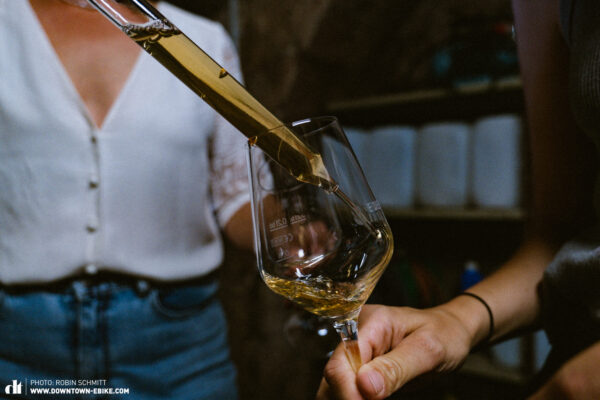
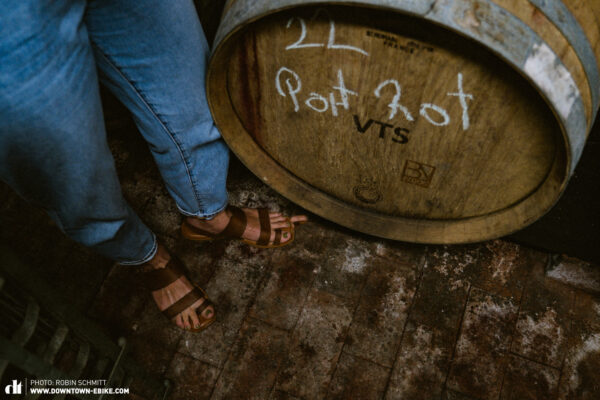
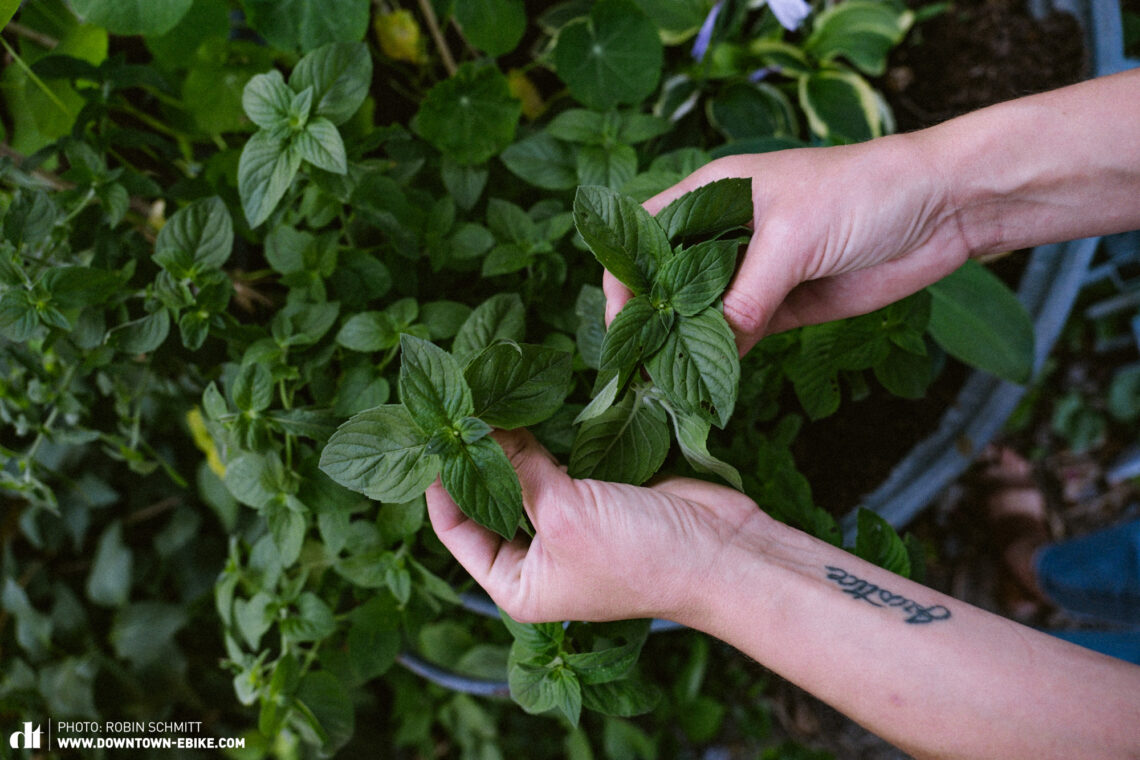
Five friends and wine
It all started with an old vineyard that belonged to Karin’s father-in-law, followed by other vineyards that were bought or leased over time. The five friends who embarked on this adventure and run the collective together are Dennis Keifer, Karin Nehls, Manuel Maile, Moritz Eitler and Nicolai Diettrich. For all of them, winemaking is a side project while they continue to work in their respective professions as accountant, graphic designer, marketing manager, roofer and development engineer. Only Dennis is a qualified winemaker. Beyond the allure of making good wine, what drives the friends are inspiring connections and meaningful networking. This encompasses fresh faces as well as old acquaintances. Somehow everything here draws new inspiration and approaches from supposed opposites: mountain and valley, young and old, town and country, everything seems effortlessly interwoven. This way they don’t only create wine but also a distinctive way of life. Friendship and community are the heart of the Edenberg & Tal wine collective.
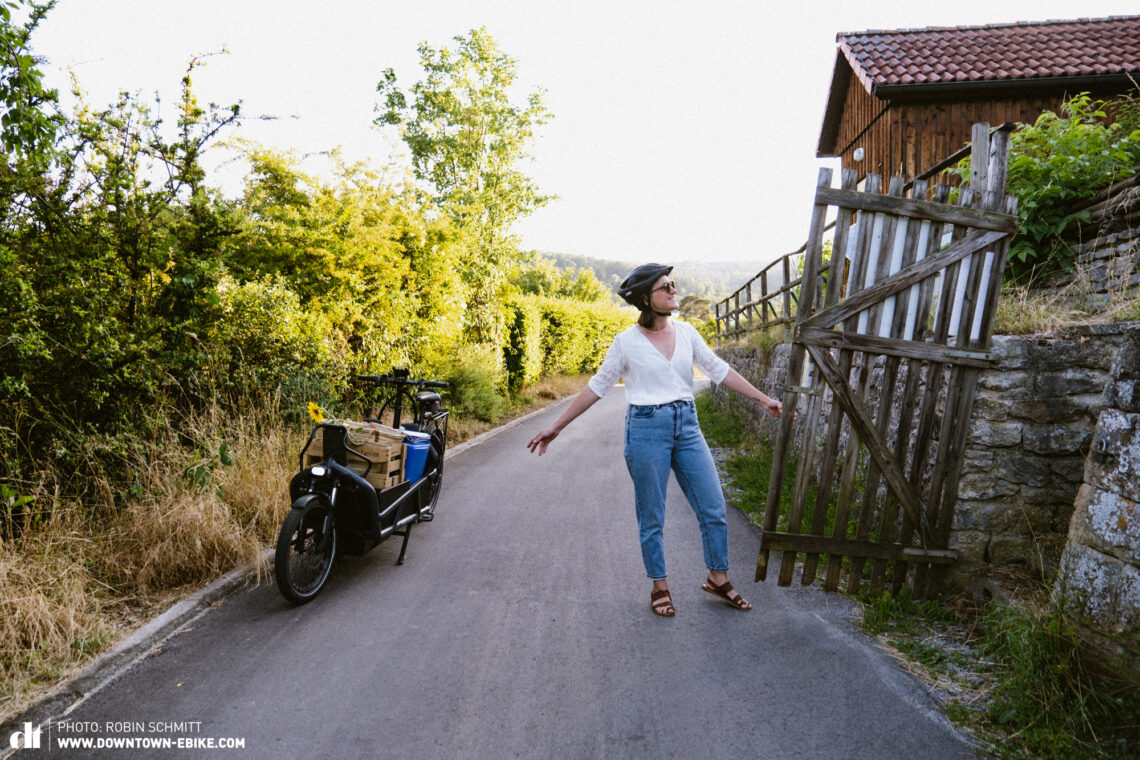
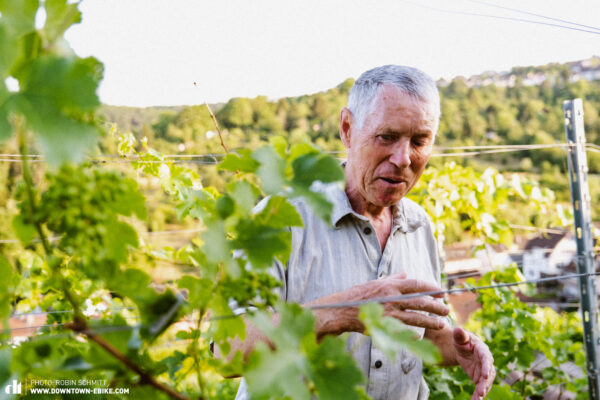
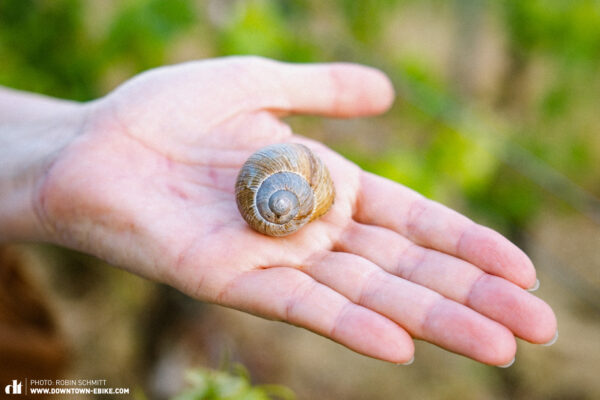
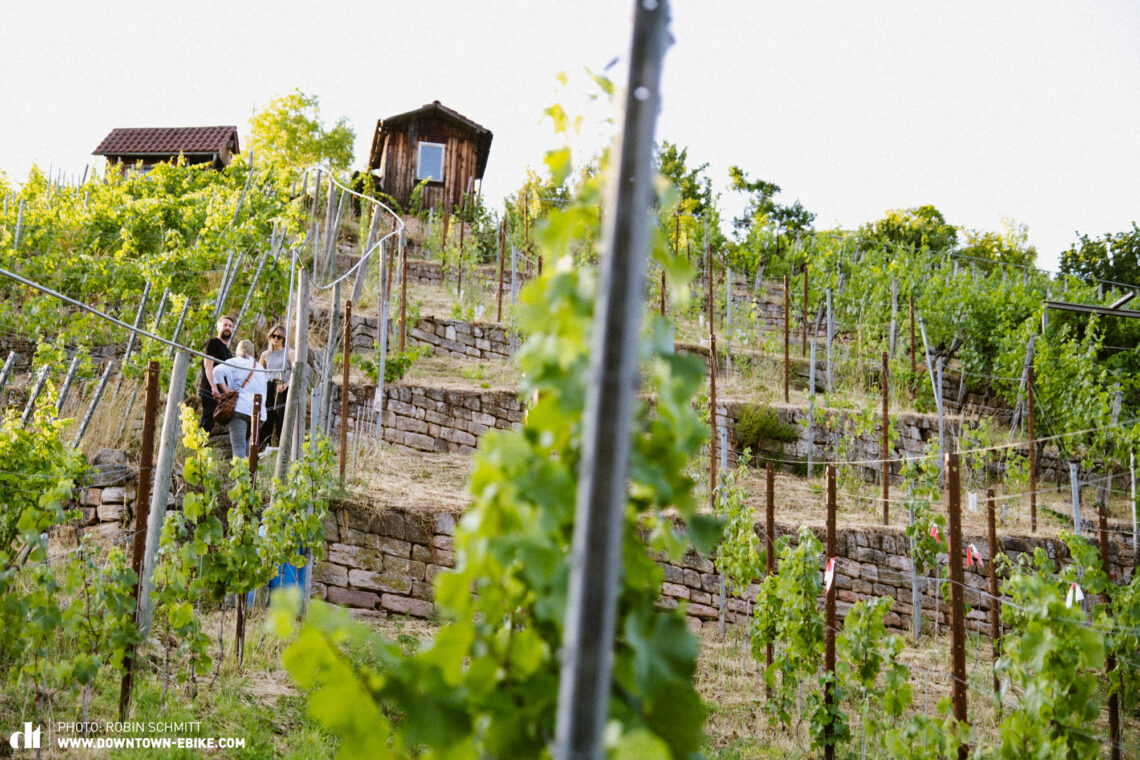
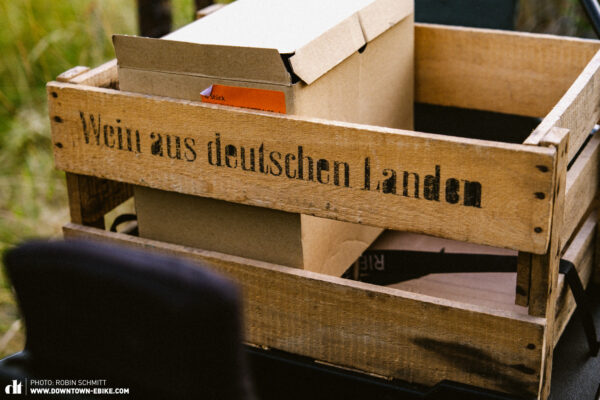
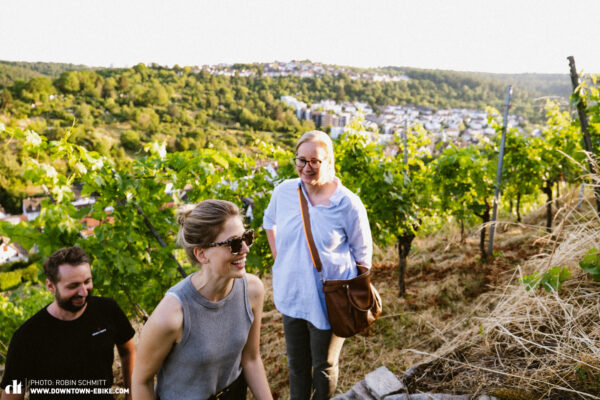
Just let it grow
Whole books can be written about viticulture, and oenology is a complex science. The winemaking philosophy of the five friends is based on minimal intervention. This means, for example, that no yeast is added to the wine. Instead, they use the natural yeast that forms on the grapes. Dry stone walls are part of the cultivated landscape, and the regenerative cultivation of the steep slopes shows that humankind can also have a positive impact on nature. A delicate ecosystem thrives on the sun terraces of the vineyards. Insects, lizards, birds, over 170 species of wild bees and countless butterflies find refuge here.
This is the reason that Edenberg & Tal aims to intervene as little as possible in the natural cycle. They cultivate the vines organically, don’t compact the soil or clarify the wine, but only filter it mechanically, which also makes it vegan. The traditional winemakers in the village see the young collective and their experiments as an asset. The collective cultivates a total of 1.3 hectares of vines, producing white and red wine, as well as a port-style liqueur wine, of which only 500 bottles of red and white each are produced every year. Earlier we were fortunate enough to taste this delicacy directly from the wooden barrels in the old cellar! But now we are sat in the heart of the vineyard, basking in the last rays of sunshine, tasting the wines in their place of origin and losing track of time. It’s one of those treasured moments of conscious mindfulness – neither running from something nor searching for something new. This is what Zen looks like in everyday life, embracing the immediacy of the moment and simply living, intuitively and without the want for much.
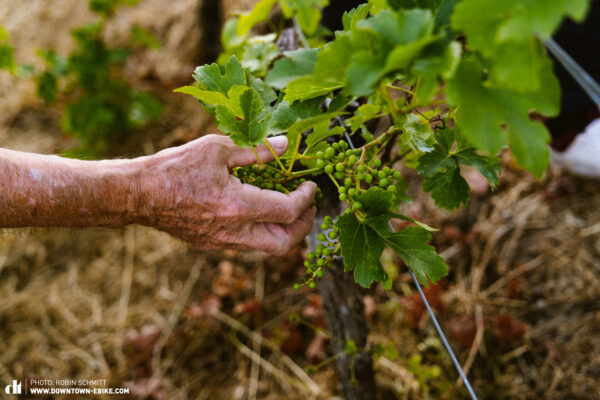
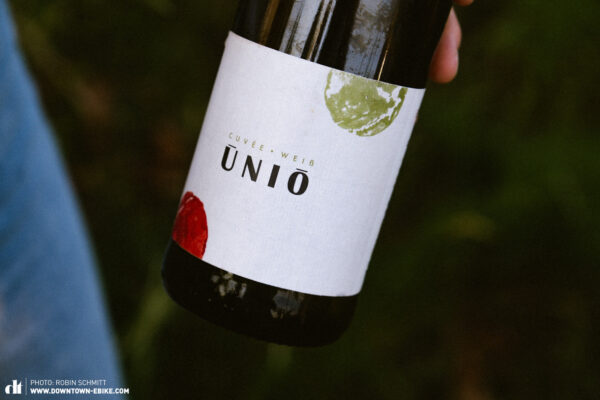

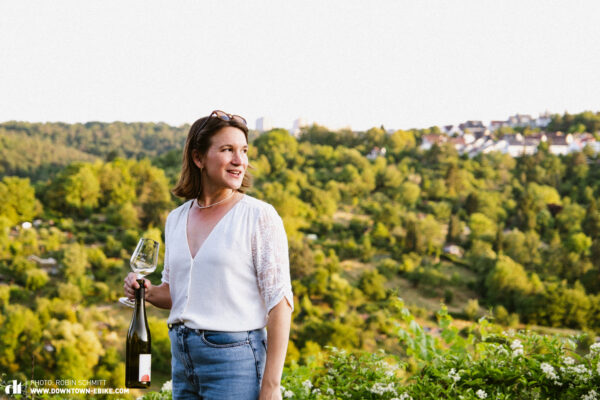
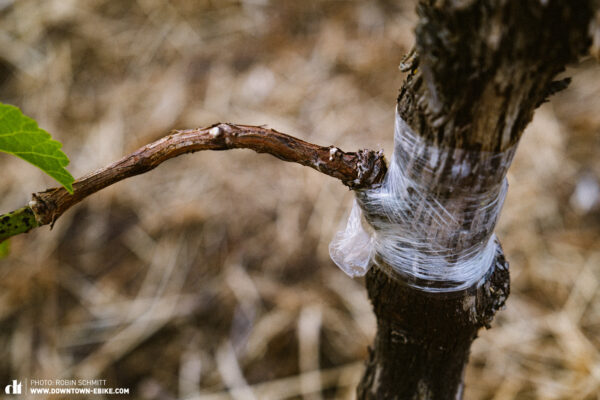
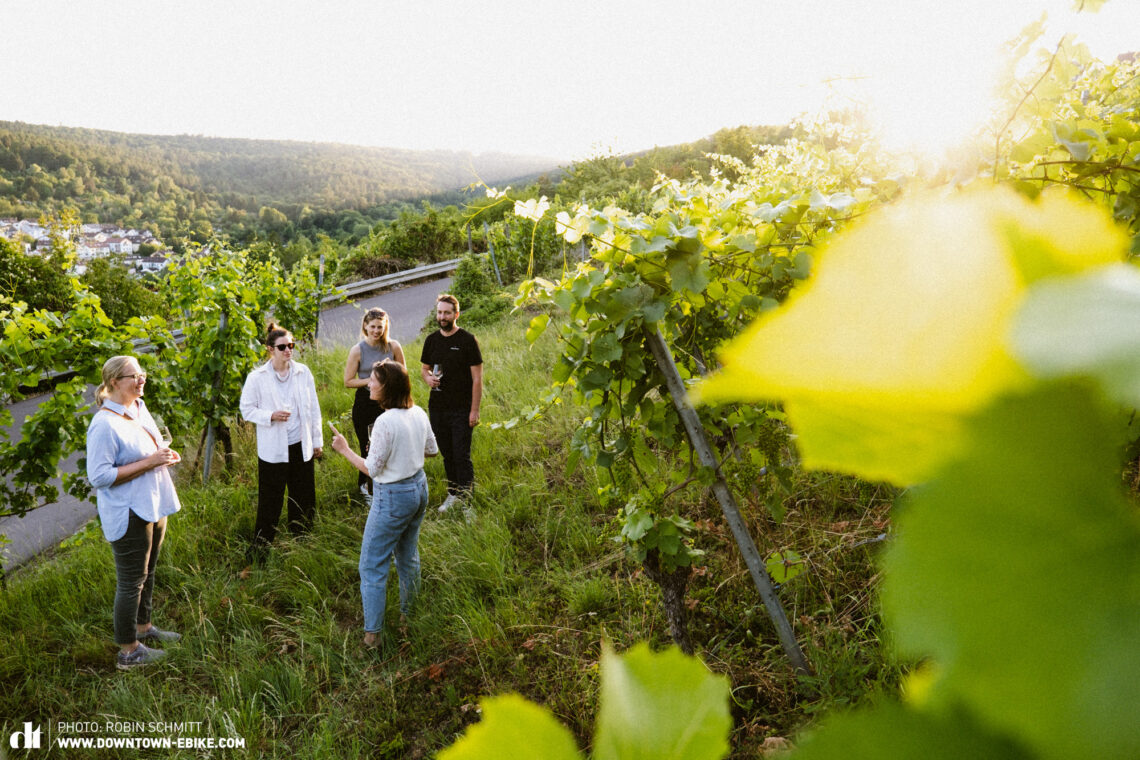
New wine on old vines
In our fast-paced and often hectic world, we readily succumb to the allure of the latest trends. Yet, in the realm of winemaking, you discover the art of letting time work for you. If you want to cultivate new varieties and plant new vines, it sometimes takes up to 3 years for the first harvest. However, you can take a shortcut by literally resorting to the old generation. This is where chip budding steps in, a technique involving grafting youthful shoots from a preferred grape variety onto more mature vines. If all goes well, you can harvest grapes again the following year. This technique allows you to preserve the old plant and use its strong, often metre-deep root system for the new wine variety. Ideal if you want to switch to new, mould-resistant or climate-tolerant varieties.

Home Office
Wine has become part of Karin’s life – along with her graphic design career, three children, and setting up her own forest kindergarten, the family’s new home will be designed around winemaking too. Stepping into Karin’s still-under-construction home, you see that she continues the theme of building something new on top of something old. The historic house, built in 1875, is being converted for the family’s use… and, of course, for wine storage: The old wine cellar forms the foundation of the new home. The new and renovated dining room will also become a hub for wine tastings and meetings related to the cooperative, while from the terrace you can quickly reach your vineyards via wild, steep gardens. The ideal home office: completely offline and most of all with kindred spirits who share your passion for wine.
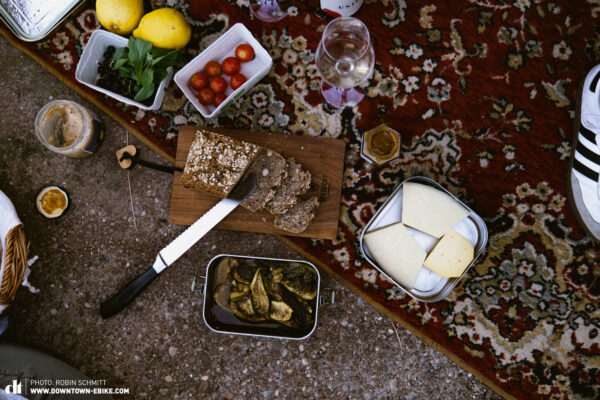

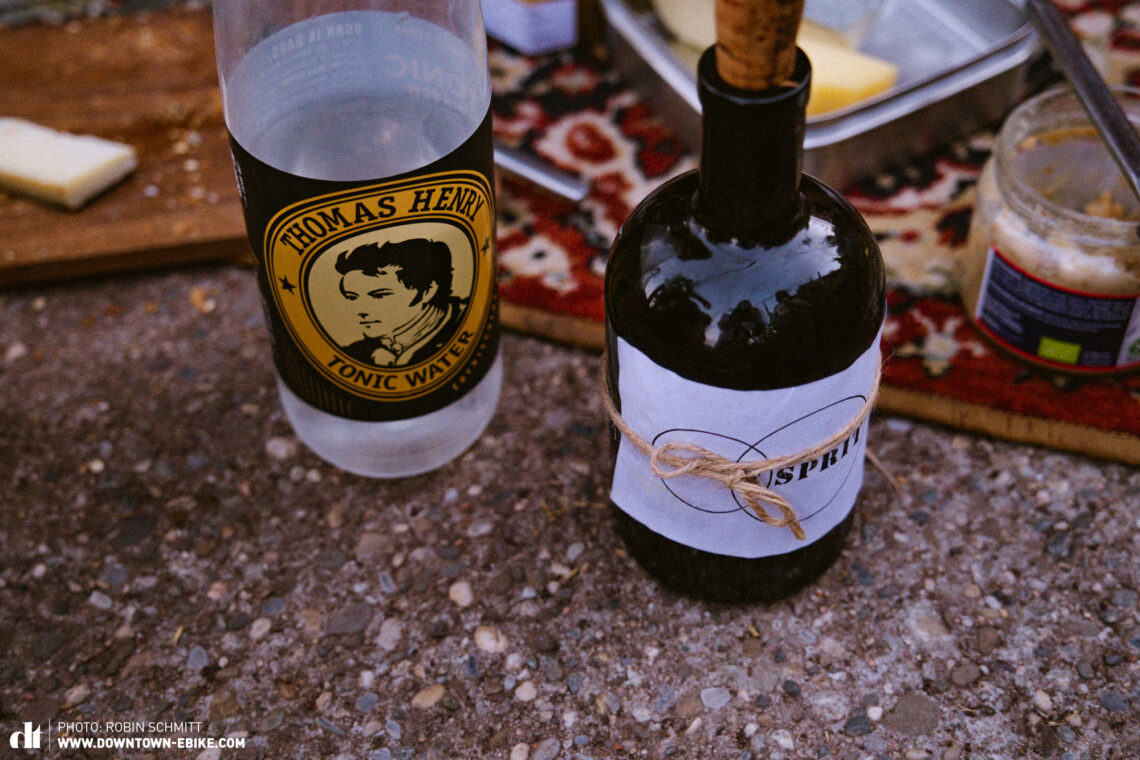

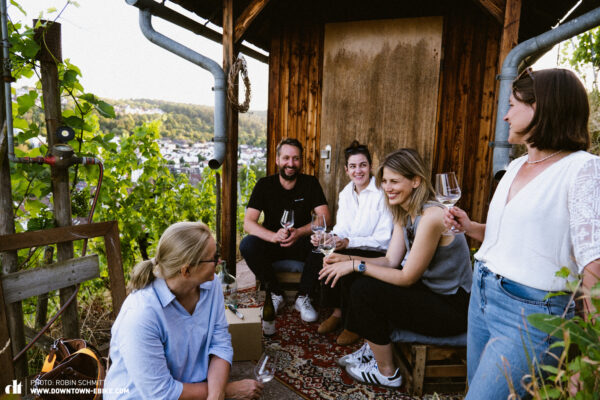
From our evening at Edenberg & Tal, we not only took home the recipe for the perfect summer drink, but also the understanding that life concepts do not always have to be completely reinvented – they can benefit from the roots of past generations. Whether it’s wine, work or cycling, it’s all about finding happiness in the present moment. And that’s exactly how we felt on that blissful summer’s evening in the vineyard.
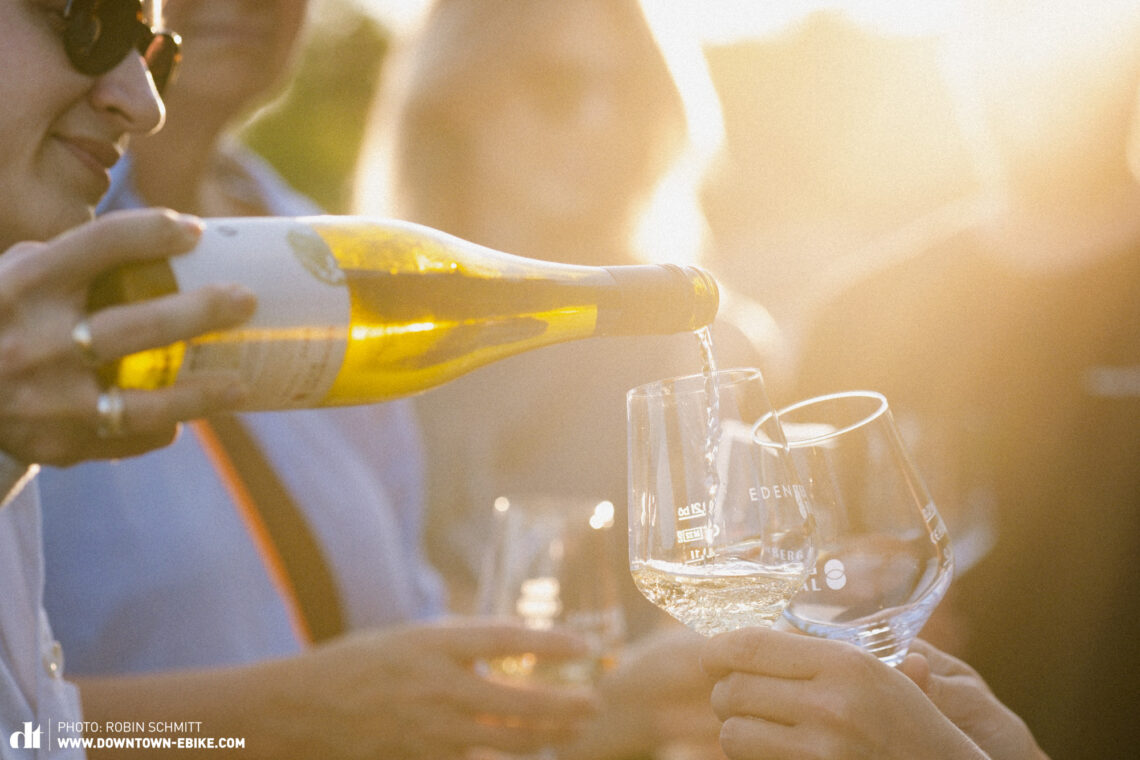
Words: Susanne Feddersen Photos: Robin Schmitt



